Chất Liệu Gabor [Gabor Texture Node]¶
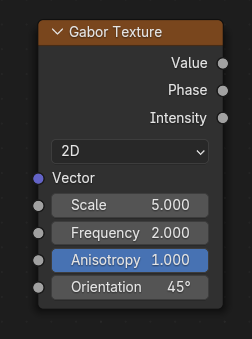
The Gabor Texture node evaluates a Gabor noise at the input texture coordinates. Gabor noise is visually characterized by random interleaved bands whose direction and width can be controlled. Additionally, it can be used to create omnidirectional noise like the standard Noise Texture node, but since it is more expensive to compute, using the Noise Texture node is probably the better option in those cases. See the examples for more information.
Ghi chú
Nút này được chuyển từ các nút tô bóng sang. Hướng dẫn sử dụng và hình ảnh tham chiếu đến từ phiên bản tô bóng của nút. Nút này chấp nhận các đầu vào và đầu ra trường. Khi không được kết nối thì đầu vào Vectơ có giá trị thuộc tính "vị trí" ngầm định.
Đầu Vào (Inputs)¶
- Véctơ (Vector)
The tọa độ tại which Gabor Nhiễu will be đã Tính Toán. The Z thành phần được ignored trong 2D kiểu chữ. Mặc Định tới "Do Máy Sinh Tạo" tọa độ chất liệu nếu ổ cắm được trái không kết nối.
- Tỷ Lệ (Scale)
Tỷ Lệ của Gabor nhiễu.
- Tần Số (Frequency)
The rate at which the Gabor noise changes across space. This is different from the Scale input in that it only scales perpendicular to the Gabor noise direction.
- Dị Hướng (Anisotropy)
The directionality of Gabor noise. 1 means the noise is completely directional, while 0 means the noise is omnidirectional.
- Định Hướng (Orientation)
The direction of anisotropic Gabor noise. This is an angle for the 2D case, while it is a unit direction vector for the 3D case.
Tính Chất (Properties)¶
- Thể Loại (Type)
Thuộc Thể Loại Gabor chất liệu
- 2D:
Đánh Giá the nhiễu vào/trong 2D Phân Khoảng Cách/Trống/Không Gian Z thành phần của đầu vào véctơ được ignored.
- 3D:
Đánh Giá the nhiễu vào/trong 3D phân khoảng cách/trống/không gian.
Ghi chú
Số chiều cao hơn tương đương với thời gian kết xuất lâu hơn, do đó, chúng ta nên sử dụng số chiều thấp hơn, trừ phi thực sự cần thiết số chiều cao hơn.
Đầu Ra (Outputs)¶
- Value (Giá Trị)
The Gabor noise value with both random intensity and phase. This is equal to sine the phase multiplied by the intensity.
- Pha [Sóng] (Phase)
The phase of the Gabor noise, which has no random intensity.
- Cường Độ (Intensity)
The intensity of the Gabor noise, which has no random phase.
Một Số Ví Dụ (Examples)¶
The following table demonstrates different outputs of the node with different parameters. As can be seen, the noise is visually characterized by interleaved bands that are generally oriented in a specific direction. But the Anisotropy parameter can be decreased below 1 to make the bands more random in directions. The Frequency parameter determines the number of bands perpendicular to the direction of the noise. However, the Scale parameter can also be used to globally increase the number of bands, so consider increasing the scale first since high frequency noise can suffer from low contrast and limited interleaving of bands.
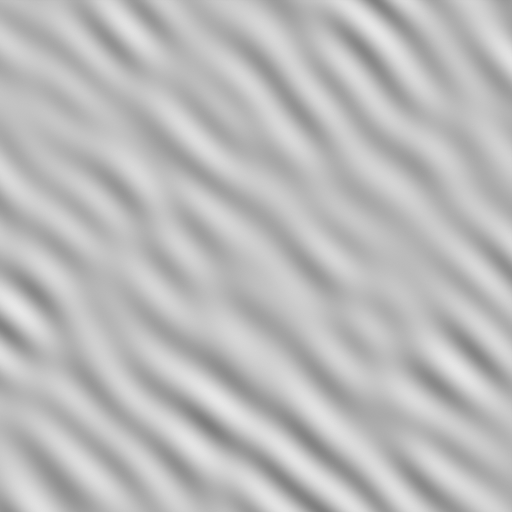
Value output. Frequency = 2. Anisotropy = 1.¶ |

Phase output. Frequency = 2. Anisotropy = 1.¶ |
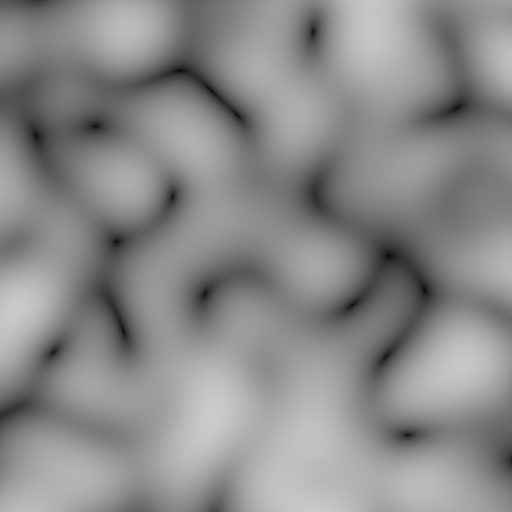
Intensity output. Frequency = 2. Anisotropy = 1.¶ |
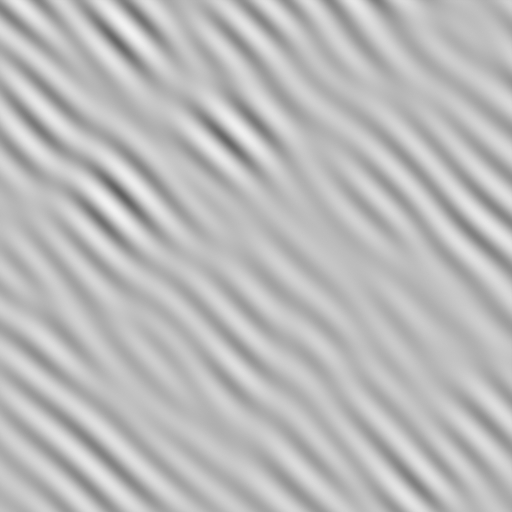
Value output. Frequency = 3. Anisotropy = 1.¶ |
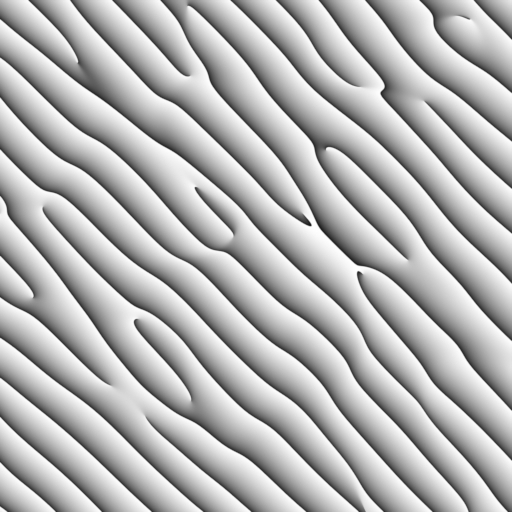
Phase output. Frequency = 3. Anisotropy = 1.¶ |
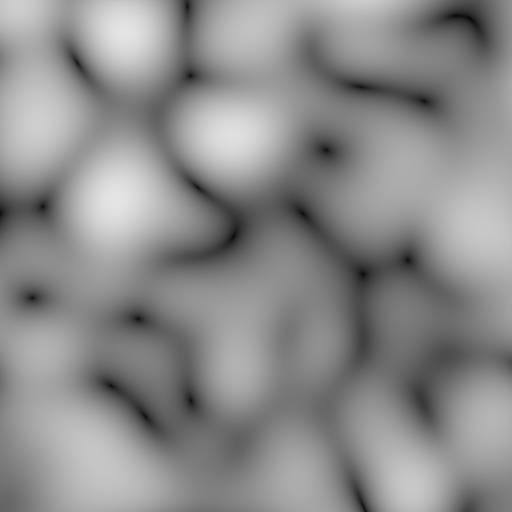
Intensity output. Frequency = 3. Anisotropy = 1.¶ |
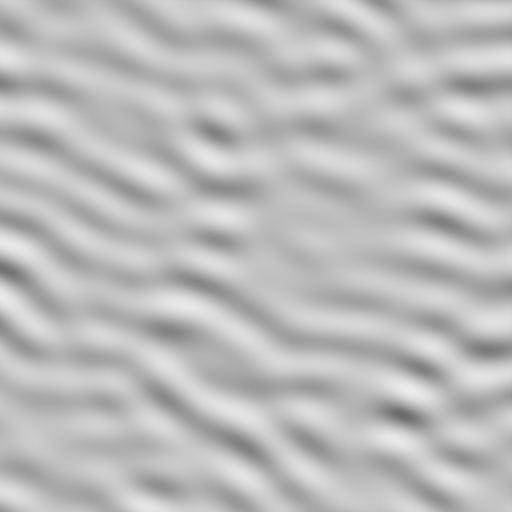
Value output. Frequency = 2. Anisotropy = 0.7.¶ |
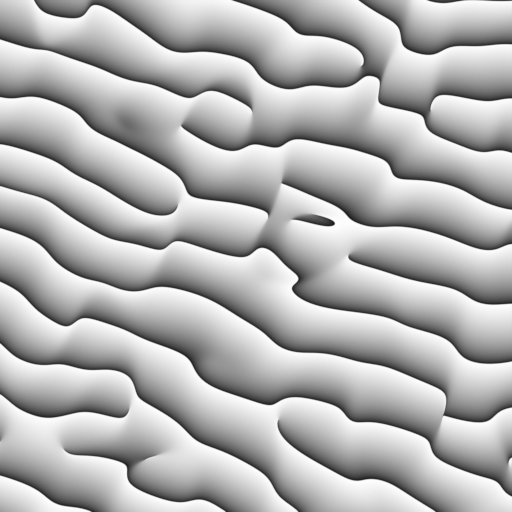
Phase output. Frequency = 2. Anisotropy = 0.7.¶ |
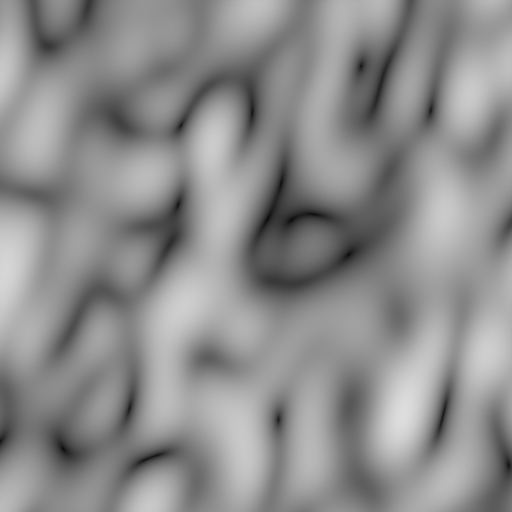
Intensity output. Frequency = 2. Anisotropy = 0.7.¶ |
Gabor noise is decomposed into a Phase and an Intensity components, where the Gabor value is computed as sine the phase multiplied by the intensity, noting that the phase output is normalized to the [0, 1] range.

Compute the value output from the phase and intensity outputs.¶
The advantage of the Phase output is that it has no random intensities and no low contrast areas as in the value output, so it can be used as a base for textures that are more structured in nature, like sand dunes.
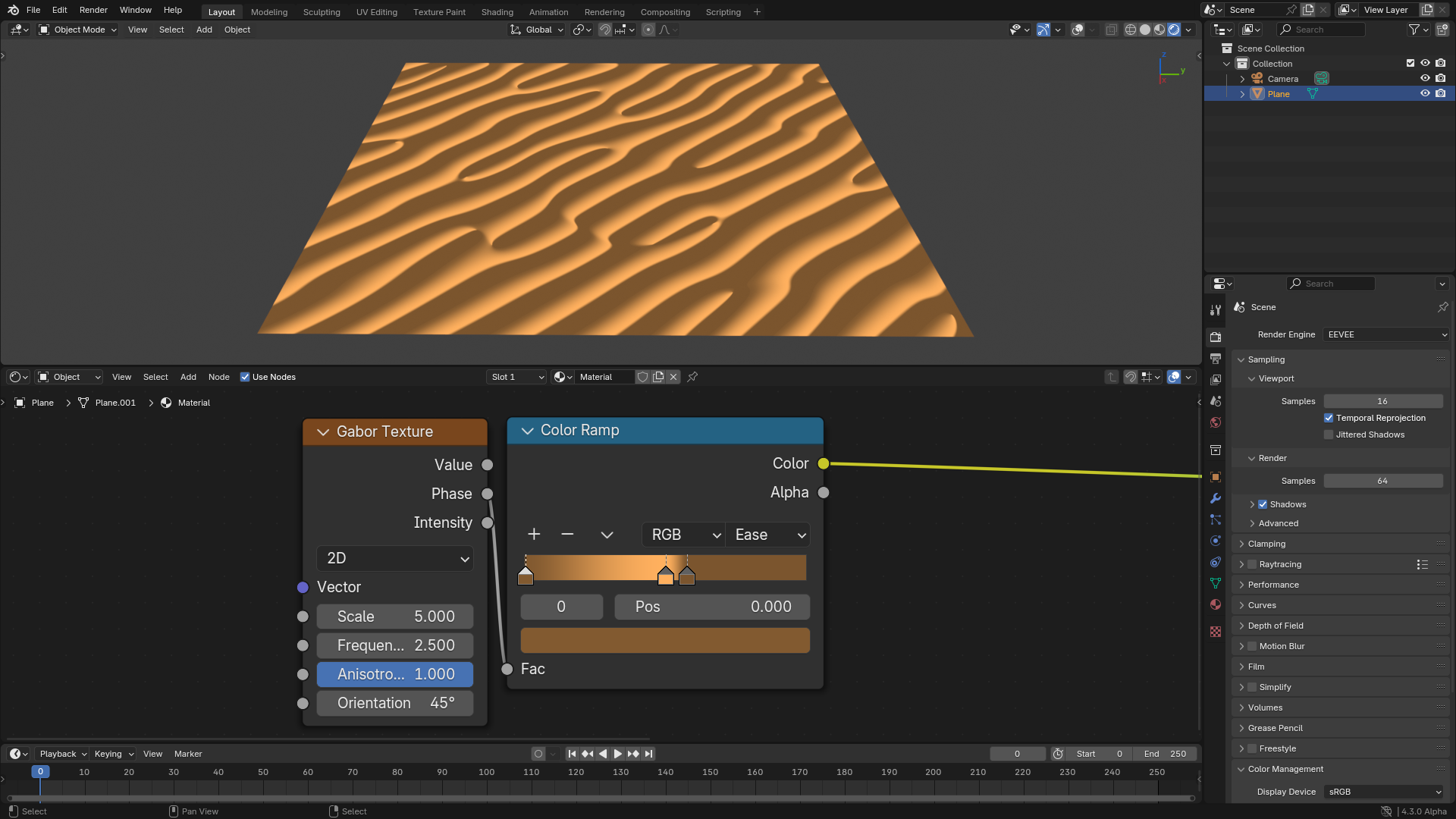
Sand dune-like structures creates using the phase output.¶
The main advantage and use of the Intensity output is that it provides information about the location of singularities in the Phase output. Singularities are those areas in the phase where the bands meet, which are shown in red in the following figure. Those areas will be close to zero in the Intensity output. So if those areas are undesirable, they can be hidden by multiplying by a variant of the Intensity output.
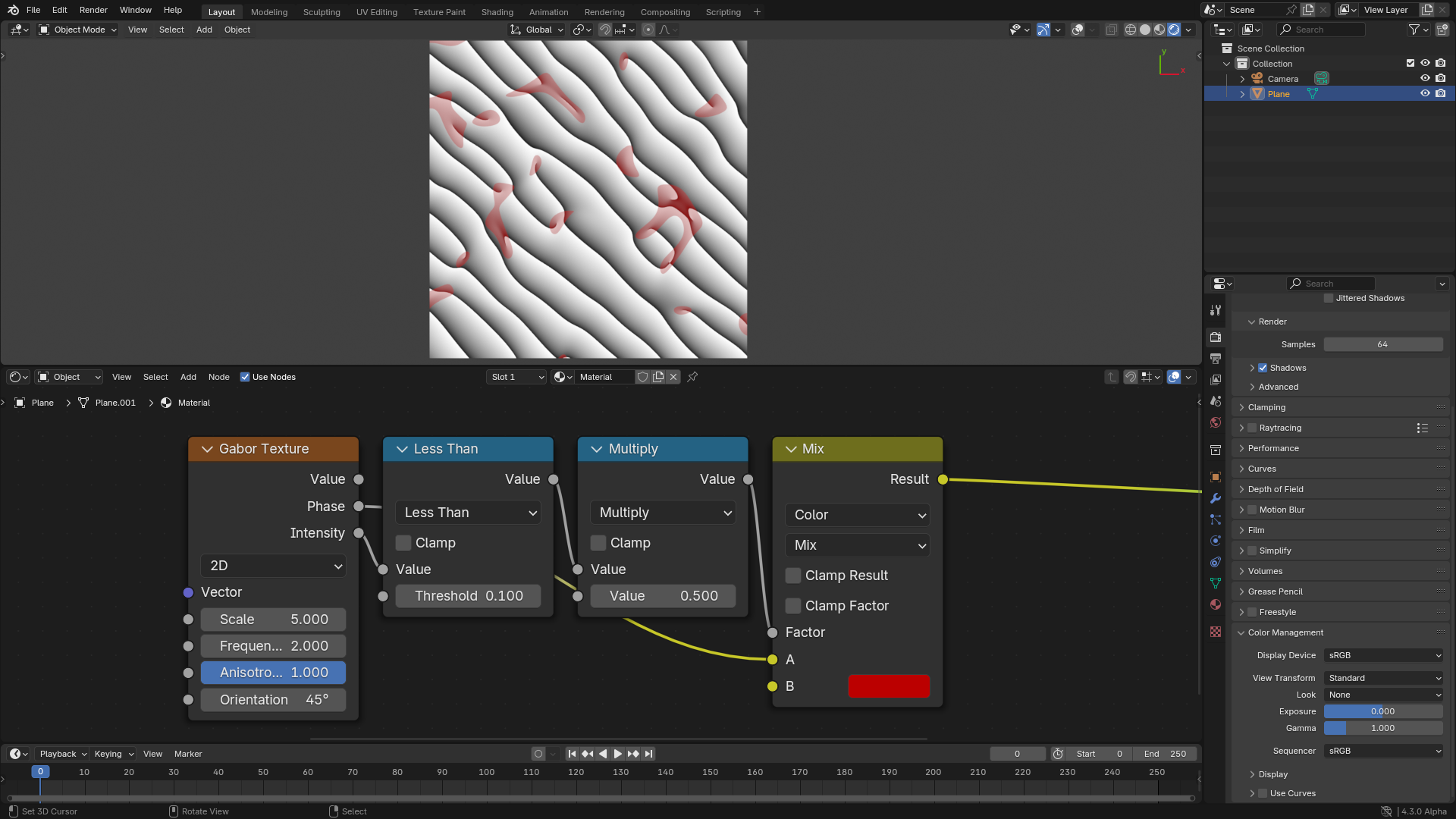
Visualization of the areas where singularities happen.¶
Inputs can be varies across space to get more interesting patterns.

Varying the frequency and orientation across space.¶